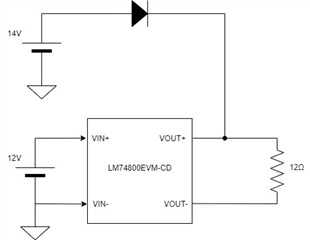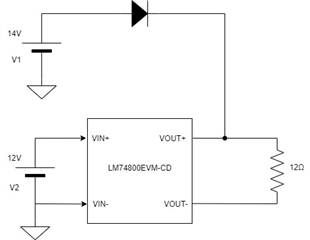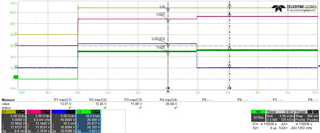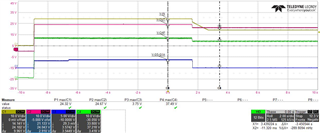Other Parts Discussed in Thread: LM74800-Q1
I am testing the functionality of the LM74800 driver using the LM74800EVM-CD evaluation board. My setup has the jump inserted in:
J5 -> 1-2 Enables by connecting to VIN
J6 -> 2-3 OVP set to Input OVP Cutoff at 37.5 V
J7 -> Enables LED indication for output
J8 -> 2-3 Input Voltage Sense directly on input supply
with this setup when VOUT> VIN the driver turns off the MOSFET Q1A and blocks the reverse current. I tried replacing the LM74800DRRRQ1 driver with the LM74801QDRRRQ1 driver in the evaluation board. With the LM74801 driver when the output VOUT> VIN the driver does not turn off the MOSFET Q1A and the reverse current is not blocked. The jumpers setup remained the same.
I don't understand why it doesn't work properly. In the datasheet it seems the only difference is: LM74800-Q1 employs reverse current blocking using linear regulation and comparator scheme vs. LM74801-Q1 which supports comparator based scheme.
Thank you for the support.
Regards.
Federico








